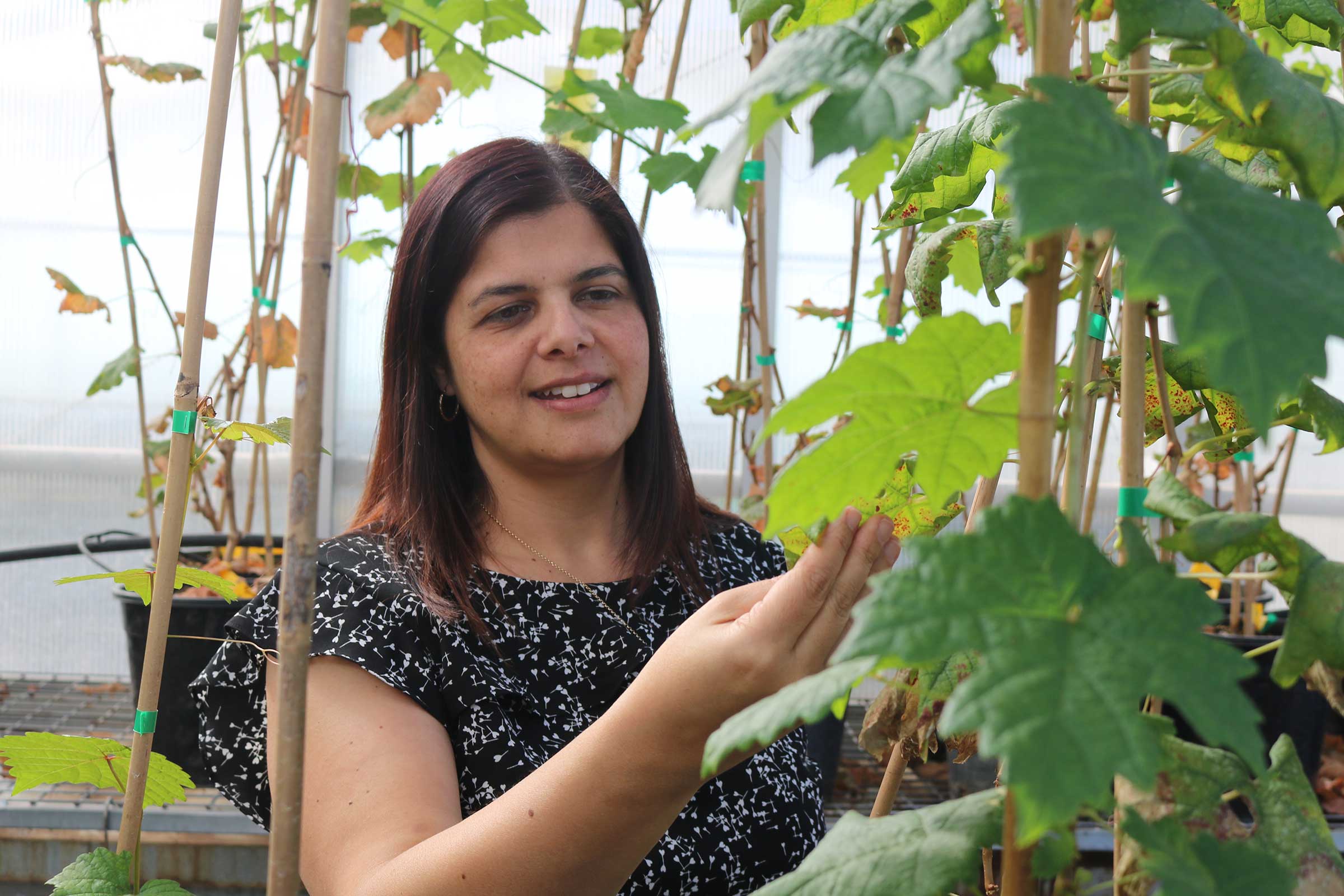Did you know that Australia has some grapevines dating back to the mid-1800s? It’s quite remarkable given the battle to keep vines alive – and productive for the Australian wine industry – is an ongoing one. At a time when agricultural crops – including grapevines – are under immense pressure from heatwaves and shortages of irrigation water, protecting them as best as possible is very important. And it’s something that Charles Sturt University researcher Associate Professor Sandra Savocchia is helping with her wine industry research.
Grapevines are vulnerable to a wide range of pests and diseases. Indeed, in the 19th century an outbreak of phylloxera, an aphid-like insect, devastated vines and vineyards across much of Europe.
Moreover, as the wine industry becomes more and more valuable to national economies, protecting vines has become increasingly important.
Did you know? Charles Sturt University has its own winery. And lots of its wines are made using grapes grown by our alumni!
The importance of the Australian wine industry
Recent figures show that grape-growing, wine-making and wine-related tourism in our 65 wine regions employ more than 170,000 people, mostly in regional Australia, and generates $40 billion annually. And just like in other wine-producing countries, the variety of soils and climates in Australia result in a panoply of terroirs – unique environments producing unique wines.
But you can’t produce wines without vines. And that’s where Sandra’s research comes in. She is investigating how to both prevent and treat wood diseases in grapevines.
“We expect to see vines surviving 100 years or more in some instances. But we have cases where vines as young as five years old are getting diseases and dying back.
“Generally, the older the vines get, the better wine that you’re able to make from them. So having vines last longer than 10 years is very important. That’s not just from a wine quality aspect, but also for vineyard productivity. No one wants to be pulling out and replanting a vineyard or undertaking extensive management techniques after that kind of time. It’s very costly.”
Giving information to the industry
Sandra is also plugged into wine industry research in our regions, giving growers the chance to get information and practical experience.
“We deliver workshops to industry, the viticulture growers in the field. We’ll talk to them about the issue and how to manage it. Then we’ll take the growers out to a vineyard, to a site where we know there’s a problem, and do hands-on workshops around what to look for and how to manage the problem.”
Growers have a range of control strategies to protect grapevines from pests and diseases. But Sandra is also overseeing trials of remedial surgery to try and rejuvenate vines that have already suffered debilitating wood diseases. Such surgery could mean growers don’t have to undertake costly re-plantings.
The downside, however, is that production from these vines can be delayed for up to three years while growers wait for the ‘cordons’, or arms of the grapevine which carry the fruiting grapes, to regrow; the spurs to reform; and bunches to emerge. However, this is still better than replacing the whole vine.
“We have two vineyard sites where we’ve cut back the trunks and we’ve removed the infection from the vines. We’re training some new shoots which will eventually form cordons, and we’re monitoring them over the long-term to see whether we can get them back to the level of production observed prior to infection.”
Play your part
If you want to be a part of the efforts to protect our wine industry, and help it flourish, Charles Sturt University courses are for you. Ready to make a difference? You can, here.

